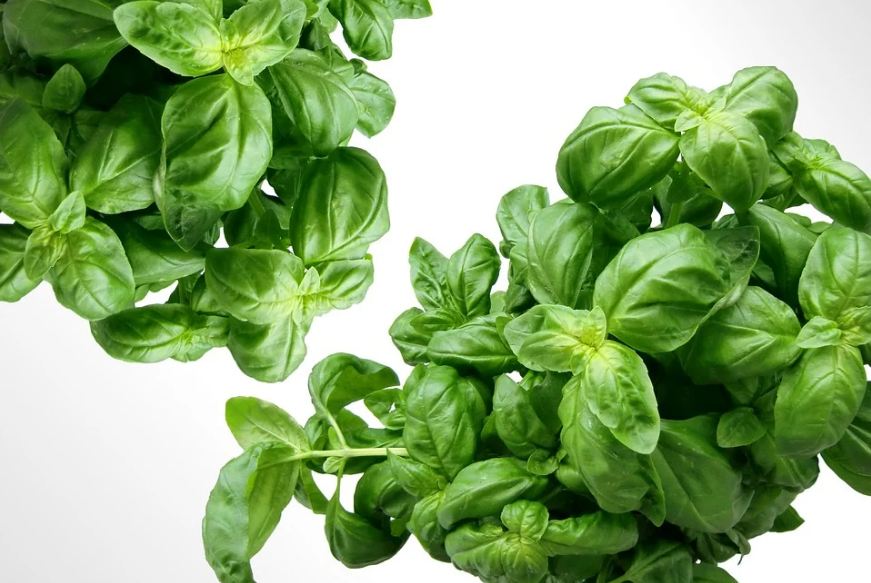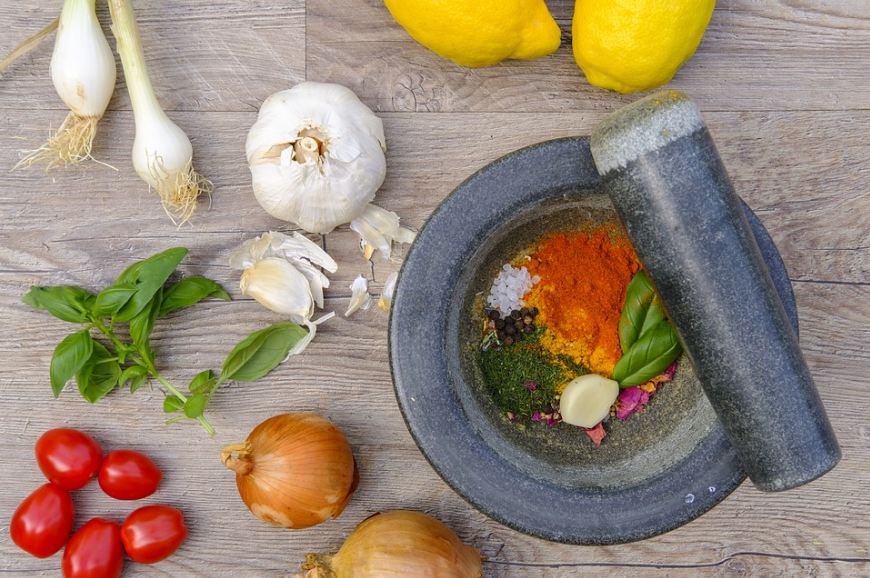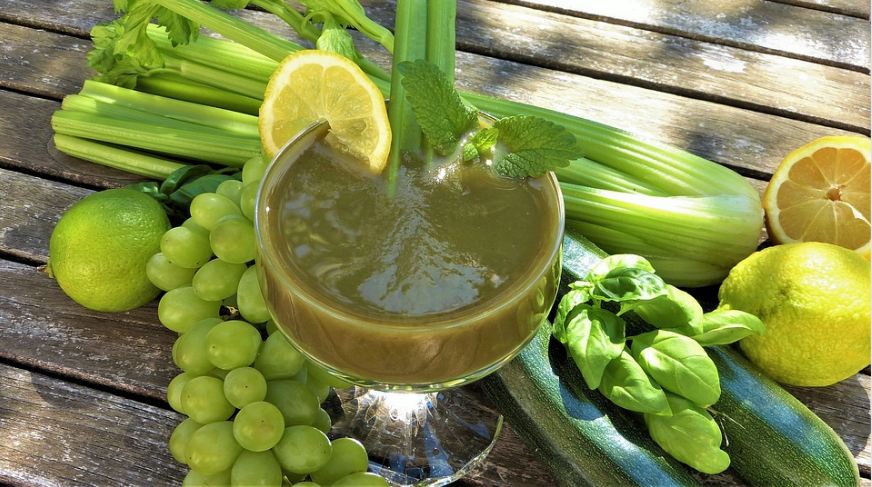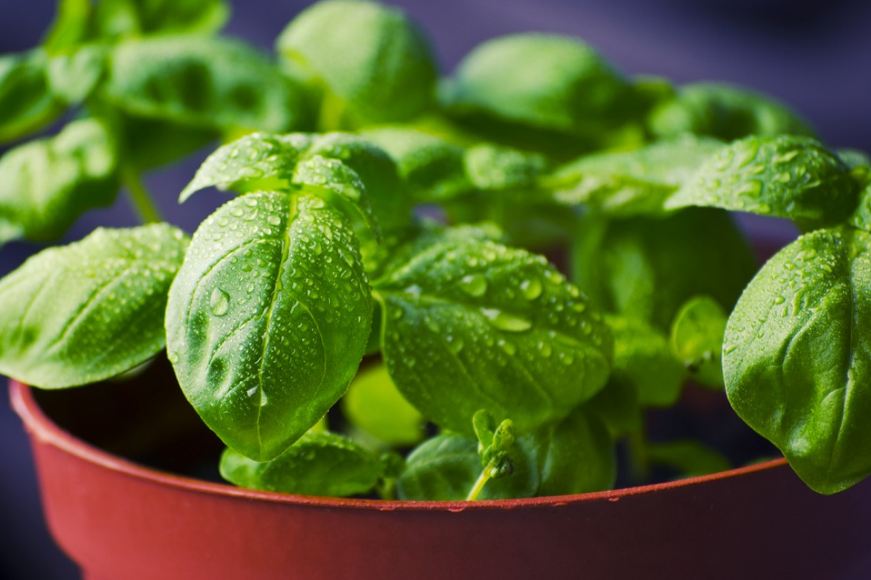Lemon and basil both are beloved when it comes to cooking because of their exquisite odors. But what if you could have the fresh aroma of basil along with the balsamic essence of lemon, all in one plant? Lemon basil stirs both these incredible scents and flavors for an extraordinary herb experience. You can easily grow this, provided you have a surplus of sun and heat.
Lemon basil is a hybrid of sweet basil and American basil. Related to mint, this herb mainly prospered in the Southern parts of Asia and Northeastern Africa. It has a beautiful lemon scentand is best known for its culinary usage. It bears glamorous white flowers in late summer to early fall.
Its stems vary in length from 20-40 cm or 8-20 inches. The leaves are similar in shape to those of basil but tend to be narrower with slightly indented edges. Seeds are formed after flowering and dry on the plant.
History
The history of lemon basil goes all way back to Ancient Greece, where it was an emblem of mourning. Ancient legends consider it sacred, stating that it has healing powers. In many cultures, it is viewed as a token of love and engagement. However, in Greek and Roman civilizations, it was considered as an emblem of hate and hardships.
It was also of great importance in Ayurvedic medicine. English royalty used it for both cosmetic and culinary purposes; hence, the chefs called it “the king of herbs.” It was not just loved by the ruling class but was also popular throughout England because of its exquisite aroma and flavorful effect.
Lemon basil is presumed to be native to India and ancient Persia. The herb spread across Asia at the beginning of the period and then began to be unduly cultivated in southeast Asia for its sweet anise flavor. While its exact origins are yet to be known, experts believe that it is a hybrid of sweet basil, Ocimumbasilicum, and American basil, Ocimumamericanum. Lemon basil was introduced to the Americans during the 17th century, but it was never commercially grown and waslimited to home gardens and specialty growers.
Today, lemon basil is a popular condiment. It is found mainly in Southeast Asia, Asia, and Indonesia. Still, it can be easily spotted at local grocers, farmer’s markets, Asian markets, and the United States’ temperate regions.
How to Grow Lemon Basil?
Lemon basil needs proper care like any other basil species. It should receive at least six hours of forthright sunlight a day since it is a tropical herb. Among the many extraordinary characteristics of lemon basil is that it can sometimes continue to grow when only given water since it’s quite hardy. However, it is preferable to use fertilizer to enhance its flavor. Whenever the topmost part of the soil gets dry, it should be immediately watered. It may wither by the time but will be back to normal once watered.
One thing to note is that basil should be strictly harvested before it reaches the flowering stage. If given a chance to flower, it’ll result in the loss of flavor, and the leaves would lose their shape and become leathery, smaller, and dry. Flower clusters should be removed to allow the plant to continue its vegetative growth.
You should sow seeds indoors at least six weeks prior to the last expected frost for best results in Northern temperature. When the soil has warmed, and plants have grown at least two sets of true leaves, you can transplant them outdoors. Plastic or organic mulch can be used around the plant to stave off weed and retain moisture.
In southern areas, the seeds can be directly planted outdoors. They germinate within 8-14 days. The legginess can be fixed by pinching them back when they are still young.
Different Types of Basils
There are distinct varieties of basils, each with exceptional characteristics and flavor that you can choose based on your taste inclination and usage.
Some of these have an intense taste, and some are sweeter. Similarly, some are used for medicinal purposes, while others are ideal for culinary use. Here’s a list of some of these variations:
Sweet basil
Sweet basil is possibly the most popular culinary herb. It has a sweet odor and a tempting flavor. It has hefty, smooth leaves that are luminous green and 12-18 inches in size. The foliage color ranges from green to purple, while the leaf size varies from half an inch to lettuce-sized leaves.
Genovese
It is the most extensively used type of sweet basil and is easily found at grocery stores. This quintessential Italian herb brings aromatic and soft lewd flavor to pasta, salads, pestos, and more. It is not one of those finicky basils; hence, it is especially ideal if you are new to growing herbs. It has a healthy clove-like tang to it. It matures within 60-90 days and reaches about 24-inches.
Lettuce basil
Lettuce basil has a mild, sweet zest and can grow as much as 2-feet tall. Its leaves are as big as your hand and take almost 75 days to mature.
Thai basil
With alluring purple stems and purple-veined leaves on a glossy dark green background, Thai basils are no less than a treat for your eyes. That is why they are grown not only for their culinary uses but also as an ornamental specimen. Thai basil is a mint family member and has a particular sweet flavor redolent of clove, licorice, and anise. It is ubiquitous among the cuisines of Laos and Cambodia, Thailand, and Vietnam.
Purple basil
Purple basil has several varieties, and they all accentuate elegant lilac flowers and dazzling dark purple leaves.Among the many variations of purple basil arepurple ruffles, a colorful addition to any flower or herb garden because of their serrated and rippling leaves.
Dark opal
It grows about a foot long and has beautiful red stems.
Round Midnight
It has a solid purple color, and its leaves are flat shaped. It can grow as much as 12-inches in length and 10-inches wide.
Nutritional Value of Lemon Basils
Lemon basils are loaded with minerals and vitamins. Let us look at their nutritional content in detail.
Nutrients per serving
You’ll find the following quantities of nutrients in 2 tablespoons of freshly chopped basils.
Sugar: 0 grams
Carbohydrates: 0.1 grams
Fiber: 0.1 grams
Calories: 1
Fat: 0 grams
Protein: 0.2 grams
Lemon basils are rich in vitamins and minerals and vital nutrients such as Iron, Magnesium, Manganese, Vitamin A, and Vitamin K.
Iron
Iron is responsible for keeping you energetic and healthy. It also regulates body temperature and is an important component of hemoglobin, which is responsible for carrying oxygen in the blood.
It also plays a big part in supporting your immune system. Not getting enough iron through your diet makes you prone to illnesses and infections.
Magnesium
Magnesium plays numerous vital roles in maintaining the health of your body and brain.About 60% of it is found in bones and the rest in blood, muscles, fluids, and tissues. It is part of more than 600 reactions in your body, including nervous system regulation, energy creation, gene maintenance, and protein formation.
It is also known to fight depression since it plays a critical role in mood and brain function. Low levels are responsible for an increased risk of depression.
Manganese
Manganese is another vital mineral that is needed in small amounts by your body. It plays a role in numerous bodily functions such as bone formation, reducing inflammation, and blood clotting. It also contributes to the metabolism of carbohydrates, glucose, cholesterol, and amino acids. Moreover, it provides antioxidants, reduces blood sugar, and helps heal wounds.
Vitamin A
Vitamin A is vital for your health, and it mainly plays a role in maintaining healthy vision and allowing the normal functioning of your organs and immune system. Also, it helps in the development of babies in the womb.
Vitamin A deficiency can result in nyctalopia, also known as night blindness since the vitamin is a major component of the pigment rhodopsin.
Vitamin K
Vitamin K is significant for bone metabolism and blood clotting. It helps lower blood pressure because it prevents the minerals from building up in the arteries, allowing the blood to pump freely through the body.
Health Benefits of Lemon Basil
Lemon basil has numerous health benefits. Let us look at them in detail.
Reduces oxidative stress
Basils contain antioxidants. Antioxidants help remove unnecessary molecules such as free radicals from the body that are formed as a result of metabolism and other natural processes.
The build-up of these free radicals can result in oxidative stress that can cause cell damage.Scientists also believe that oxidative stress is linked to diabetes, cancer, rheumatoid arthritis, and other health issues.
Prevent skin aging
Research published in 2011 states that some properties of sweet basil allow it to protect the skin from some fallouts of aging.
In the study, a basil extract was tested on the laboratory models of skin, and the results suggested that the use of basil extracts in topical skin creams can reduce wrinkling and stiffness of the skin and boost hydration.
Prevents cardiovascular diseases
Another study reviewed in 2011 claims that a sweet basil extract briefly lowered the high blood pressure, possibly due to the presence of eugenol. Eugenol helps reduce blood pressure by blocking calcium channels in the body. However, the blood pressure was back to its high levels 2 minutes after the use of the basil extract.
Improves mental health
The role of tulsi in Ayurvedic medicine was reviewed in 2014, and it states that the plant constitutes properties that can improve stress-related sleep, sex issues, improve thinking and reasoning capability, and alleviate anxiety and depression. It can also prevent memory loss issues due to aging.
Beauty Benefits of Lemon Basil
Basil is considered a natural cleanser and purifier for your skin. It helps remove dirt and other impurities,making it ideal for those who have oily skin and clogged pores. You can also make a beauty mask by mixing its leaves with egg whites and sea salt for a fresh look. Some other benefits include
- It helps reduce eyes puffiness
You can apply wet leaves under your eyes to reduce the appearance of dark circles and puffy eyes.
- Reduces the appearance of wrinkles
Basils contain antioxidants that reduce the appearance of wrinkles and fine lines by protecting the skin against environmental stressors.
- Reduces itchiness and soothes the skin
It can give a calming effect to your skin and soften it. It also acts as a remedy for temporary skin itchiness.
Possible Side Effects of Basil
There are almost no side effects of basil if taken the right way and in the right amount.
Low Blood Pressure
It tends to lower down the blood pressure. In certain people with low blood pressure, it can cause blood pressure to become excessively low, which can be dangerous for their health.
Bleeding Disorder
Basil is not healthy for people with bleeding disorders and can put their lives at risk because basil oil and extracts can slow blood clotting and increase bleeding.
Not Recommended Before Surgery
It is recommended not to use basil oils or extracts at least two weeks prior to a scheduled surgery to prevent excessive blood loss.
Excessive Medicinal Usage
Though small food amounts of basil are likely to be safe; however, excessive medicinal use can be dangerous since basil consists of compound names estragole, which induced liver cancer in laboratory mice.
Conclusion
This incredible silver-green herb with lemony aroma and flavor is loved worldwide and is especially famous because it adds flavor to everything it touches. This nutritious herb is incredibly healthy for your body and helps fightoff and preventdiseases.




